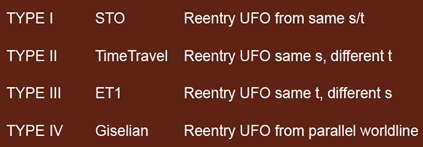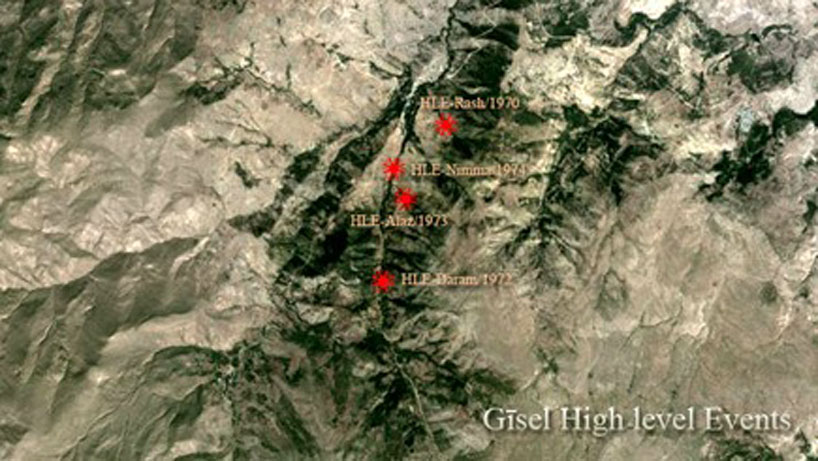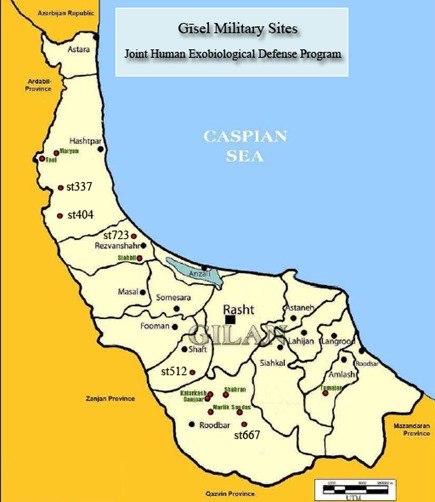It looks like you're using an Ad Blocker.
Please white-list or disable AboveTopSecret.com in your ad-blocking tool.
Thank you.
Some features of ATS will be disabled while you continue to use an ad-blocker.
share:
Here is a remarkable claim from
FL
, that since 1951 excavations have been underway at Gisel in Gilan Province Iran recovering alien artifacts and remains, the source is always going to
be problematic as they are highly secretive and cryptic, but generally interesting and intriguing
The Giselians they appear to consider as 'out of Earth visitors' or of a parallel worldline, which is quite unusual.
So what they appear to relate is that excavations in the area of artifacts and remains by the early 1970's seemed to be prompting High Level Giselian events...
They suggest recovery of a craft in 2003 from the Caspian sea related to these ongoing developments, were there was a report of white-yellow lights over that area.
They also suggest this is the reason for their interest in Cassini Diskus encoding, so a great many claims there, my first consideration was to try and locate if indeed there had been ongoing excavations at Gisel over the past 50 years and what had been found but found nothing online mentioning such a site by name, next i determined were exactly Gisel was with regards to archaeological sites in that region and put together this layered image, the boxed area covers well documented sites such as Kaluraz and Marlick, the cluster of five sites in the vicinity of Gisel i can find nothing on.
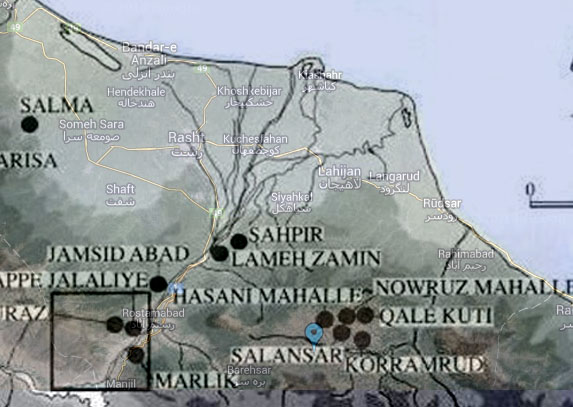
Which is a composite of the satellite location of Gisel from here and known archaeological sites in the area from here, (click on images on page for site maps no direct link) which informs me that Gisel is most closely located to a group of sites in the immediate vicinity of Salansar, none of which i can find any information on but they are there and it is an area of much illegal digging from what i have been able to learn.
Of course i would very much like to see what artifacts have been discovered in that area Giselian or otherwise, there are highly interesting artifacts from nearby Kaluraz and the Alborz mountains are highly important in Aryan traditions of their heartland.
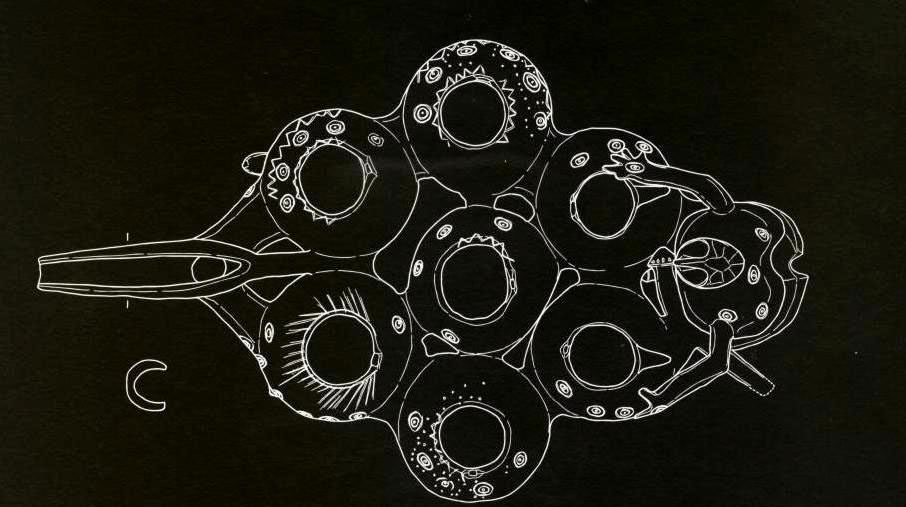
In their article they seem to indicate that Tepe Sialk was the site of an ancient crash site, certainly it is arguably the worlds oldest ziggurat this dating back some 5,000 years and i looked at curious artifacts from there here, so i am always happy enough to consider the region as having importance as far as any case for Ancient Aliens goes and so was happy enough to be pointed toward the general direction of Kaluraz and it's enigmatic masked figurines involved in cosmic pro-creation.
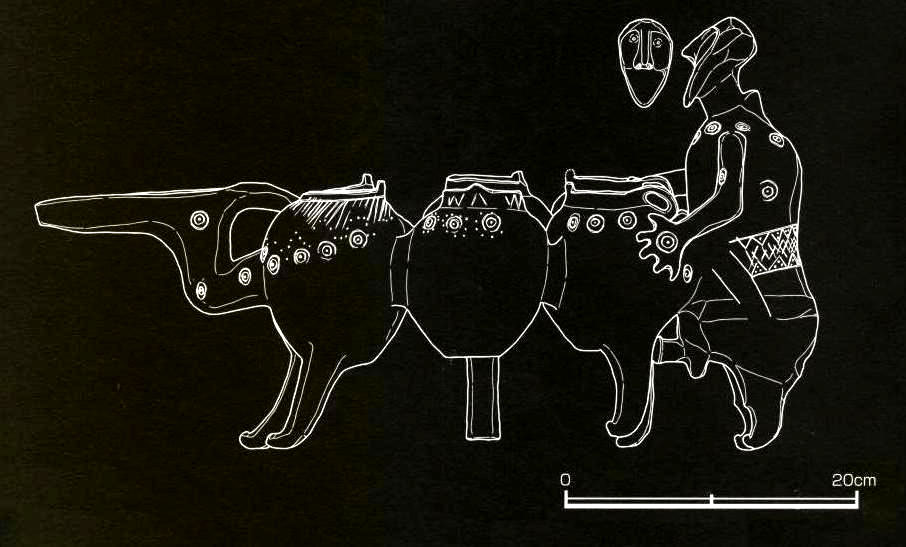
I suppose to learn what has been going on around Gisel, if anything, one would need to hear reports of the locals but of course that is difficult, otherwise the dots FL suggest are difficult to connect, but anyway i thought it worthy of discussion and consideration.
"That Gisel is somehow a hot spot for out of Earth visitors is out of dispute. The frequency of sightings and the open hostility shown by the beings operating those objects have now a record spanning more than 50 years. Whatever they lost in Gisel seems to be extremely valuable for those violent visitors"
The Giselians they appear to consider as 'out of Earth visitors' or of a parallel worldline, which is quite unusual.
...non-terrestrial artifacts have been discovered and identified from the site of Gisel and the crash site in Sialk. The abundance of extraordinary biological findings, which coincided with the peak of UFO sightings in the area, has encouraged some team members to believe that those bodies have a special meaning for the visitors. With regard to the reason for the burials in Gisel, it is possible to provide two possible answers. One is that the bodies belonged to the crew of a previous mission to Earth that simply died by natural causes and were subsequently buried, and the other could be that this was done when the crew members were killed in an accident and buried altogether.
...the so called 1976 Tehran UFO Incident was probably the tip of the iceberg. No records exist of the previously 1970 and 1972 high level events, which prompted for the formation of the International Recovery Programme
So what they appear to relate is that excavations in the area of artifacts and remains by the early 1970's seemed to be prompting High Level Giselian events...
The 2003 high level event involved the recovery of the downed craft from the depths of the Caspian Sea, which gave us the opportunity to gather information on the biology of those beings and their level of technological development
They suggest recovery of a craft in 2003 from the Caspian sea related to these ongoing developments, were there was a report of white-yellow lights over that area.
Gisel site is both amazing and frustrating. Amazing for the many artifacts and the five complete almost intact bodies recovered there; and frustrating because the site is located in a currently unfriendly country which makes operations hard
Some of the bodies found in the Gisel site deserve special mention for the pattern of disposal, as well as for the association with strange technological objects, in particular with the so called Cassini Diskus.
They also suggest this is the reason for their interest in Cassini Diskus encoding, so a great many claims there, my first consideration was to try and locate if indeed there had been ongoing excavations at Gisel over the past 50 years and what had been found but found nothing online mentioning such a site by name, next i determined were exactly Gisel was with regards to archaeological sites in that region and put together this layered image, the boxed area covers well documented sites such as Kaluraz and Marlick, the cluster of five sites in the vicinity of Gisel i can find nothing on.

Which is a composite of the satellite location of Gisel from here and known archaeological sites in the area from here, (click on images on page for site maps no direct link) which informs me that Gisel is most closely located to a group of sites in the immediate vicinity of Salansar, none of which i can find any information on but they are there and it is an area of much illegal digging from what i have been able to learn.
Of course i would very much like to see what artifacts have been discovered in that area Giselian or otherwise, there are highly interesting artifacts from nearby Kaluraz and the Alborz mountains are highly important in Aryan traditions of their heartland.

In their article they seem to indicate that Tepe Sialk was the site of an ancient crash site, certainly it is arguably the worlds oldest ziggurat this dating back some 5,000 years and i looked at curious artifacts from there here, so i am always happy enough to consider the region as having importance as far as any case for Ancient Aliens goes and so was happy enough to be pointed toward the general direction of Kaluraz and it's enigmatic masked figurines involved in cosmic pro-creation.

I suppose to learn what has been going on around Gisel, if anything, one would need to hear reports of the locals but of course that is difficult, otherwise the dots FL suggest are difficult to connect, but anyway i thought it worthy of discussion and consideration.
edit on Kam22850vAmerica/ChicagoFriday2028 by Kantzveldt because: (no reason given)
a reply to: andy06shake
Yes the claims are original, suggesting a series of inter-connected events some of which are known and others generally not, it's an intriguing case they make but difficult to prove or disprove.
It's also mysterious that when one zooms in on the satellite image supposedly for Gisel here a site called Aianashaikh is indicated even though no settlement can be seen, Gisel appears not to really exist even though Google thinks it knows were it is...
Yes the claims are original, suggesting a series of inter-connected events some of which are known and others generally not, it's an intriguing case they make but difficult to prove or disprove.
It's also mysterious that when one zooms in on the satellite image supposedly for Gisel here a site called Aianashaikh is indicated even though no settlement can be seen, Gisel appears not to really exist even though Google thinks it knows were it is...
edit on Kam22850vAmerica/ChicagoFriday2028 by Kantzveldt because: (no reason given)
a reply to: Kantzveldt
Hey K,
I've been following along at FL, too, and saw your post. My thoughts about FL these days move at glacial speed; I am going to have to slowly digest what you have posted here as well.
You know what I think it is, right? A simulation using simulated annealing.
So glad to see that you are still on this too,
Hey K,
I've been following along at FL, too, and saw your post. My thoughts about FL these days move at glacial speed; I am going to have to slowly digest what you have posted here as well.
You know what I think it is, right? A simulation using simulated annealing.
So glad to see that you are still on this too,
edit on 20-2-2015 by Bybyots because: . : .
Never heard anything about this one. I'm not going to agree until some more concrete data about this longtime conspiracy unfolds.
a reply to: Kantzveldt
I'd like to hear more stories about the sightings and what kind of impressions these UFO's are giving off that are being considered as hostility. Sure everyone heard about the Tehran incident, but I wouldn't really consider it violent, unless they been bug zapped out of the sky like a mosquito.
I doubt it will be so easily shared though.
SnF
I'd like to hear more stories about the sightings and what kind of impressions these UFO's are giving off that are being considered as hostility. Sure everyone heard about the Tehran incident, but I wouldn't really consider it violent, unless they been bug zapped out of the sky like a mosquito.
I doubt it will be so easily shared though.
SnF
a reply to: Bybyots
Yes we know they like to run simulations and hypothetical scenarios by us and among themselves, but these claims seem unusually explicit by their standards with regards to stating their interest in Cassini Diskus relates to artifacts excavated at Gisel.
The five sites in that area present something of an archaeological black hole in that the sites around Kazura and Marlik are well documented and studied in recent times whereas i could find no mention of the others included in the Iranian presentation which supposedly have been under excavation since 1951, so that needs looking into and is the most intriguing aspect for myself.
They do need to present a lot more, or at least some, evidence that reportings of lights over the Caspian sea in 2003 can be considered as a crash and recovery scenario, just throwing that in does look like sloppy stitching, as for the four 'high level events' in the region of Gisel in the early 70's it is a remote mountainous region and relatively sparsely populated but there should still be eye witness accounts to be considered at the local level, which there may be, but they really need to show some reference for those supposed events.
a reply to: Specimen
If those other sightings happened the only way to learn more would be to enquire at the relatively local level, unfortunately this is Iran we're talking about so not so easy, but you never know perhaps someone will read and relate to those events.
Yes we know they like to run simulations and hypothetical scenarios by us and among themselves, but these claims seem unusually explicit by their standards with regards to stating their interest in Cassini Diskus relates to artifacts excavated at Gisel.
The five sites in that area present something of an archaeological black hole in that the sites around Kazura and Marlik are well documented and studied in recent times whereas i could find no mention of the others included in the Iranian presentation which supposedly have been under excavation since 1951, so that needs looking into and is the most intriguing aspect for myself.
They do need to present a lot more, or at least some, evidence that reportings of lights over the Caspian sea in 2003 can be considered as a crash and recovery scenario, just throwing that in does look like sloppy stitching, as for the four 'high level events' in the region of Gisel in the early 70's it is a remote mountainous region and relatively sparsely populated but there should still be eye witness accounts to be considered at the local level, which there may be, but they really need to show some reference for those supposed events.
a reply to: Specimen
If those other sightings happened the only way to learn more would be to enquire at the relatively local level, unfortunately this is Iran we're talking about so not so easy, but you never know perhaps someone will read and relate to those events.
edit on
Kpm22850vAmerica/ChicagoFriday2028 by Kantzveldt because: (no reason given)
a reply to: Kantzveldt
Indeed, especially with all the religious fingers being thrown around, I doubt most of Iran locals would welcome and share their experiences.
Who knows, knowing those demonic tricksters, they'd probably pretend to be Allah, and act like he wasn't very happy.
Senseless humor really.
Indeed, especially with all the religious fingers being thrown around, I doubt most of Iran locals would welcome and share their experiences.
Who knows, knowing those demonic tricksters, they'd probably pretend to be Allah, and act like he wasn't very happy.
Senseless humor really.
a reply to: Kantzveldt
Reading through the link, and following the links through, reading those, there is a loose kind of pattern in the way the English excerpts are phrased, obviously according to each contributor but on top of that. It's a bit like there is no third person tense, or something like that. I wonder if they take a piece of English writing, translate it into one of these "Forgotten Languages", which would explain the sparsity of third person narrative, and then hand it to someone to translate back into English, and that's what those articles on the website are. It's more complicated than that, if that is what they are doing, but working on that premise and following the discussion back through the links, I think they are discussing meteorites.
www.academia.edu...
In the other articles through the links, there can be inferred other neolithic stone worship sites and locations/contexts that match other documented finds of meteors. For example, this article
forgottenlanguages-full.forgottenlanguages.org...
refers to "Tomb 308", which could refer to Akbar the third moghul of India.
www.giffordlectures.org...
I can see the fun in it as a game, or a puzzle, but that doesn't explain the choice of content or the way in which the descriptives have leaned through translation. I can't tell if that is a natural or directed process. Both even. For what purpose would best determine that.
Tehran is a meteor hotspot, it gets caught in a couple of different showers on a regular basis and has a deep history of meteor worship that has been incorporated the worship of many stones into the worship of one centralised idol of all the others. Iran is a pretty sophisticated country, in places, but there are many areas without electricity, remote. If you were looking to mess with the hearts and minds, in the DARPA Narrative Disruption sense, they'd be your target. Letting my imagination fly, I can see this as a means of developing a linguistic framework with which to explain phenomenon to tribes people, a) as acts of their gods who are angry at them for not bowing down to Islam, or b) joining the fight against the Islam because their aliens from another planet. Or a number of variations in between. Or none of the above... Unifying grand narrative based on alien invasion foretold by portents from the sky? The possibilities are endless.
Intent is a worry, always, great fun to play with emergent ideas though, thanks for posting.
Reading through the link, and following the links through, reading those, there is a loose kind of pattern in the way the English excerpts are phrased, obviously according to each contributor but on top of that. It's a bit like there is no third person tense, or something like that. I wonder if they take a piece of English writing, translate it into one of these "Forgotten Languages", which would explain the sparsity of third person narrative, and then hand it to someone to translate back into English, and that's what those articles on the website are. It's more complicated than that, if that is what they are doing, but working on that premise and following the discussion back through the links, I think they are discussing meteorites.
They are not mentioned in detail in his excavation report but are only discussed in a short technical addendum by L. Halm (Halm 1938: 206). From this text it appears that three nodules were found in the Chalcolithic Siyalk II “habitation area”. Her description is worth citing in full;
Three balls. (Siyalk, Period II) These balls, discovered in houses, probably had a household and were perhaps used as polishers. They had an approximately spherical shape and were very heavy and very hard. In addition, they showed in curie uses cristallisations surface. All three have been sensitive to the action of the magnet, and consisting of iron oxide, magnetic majority. It was also constate the presence of free iron. At certain points of their break, one ferric oxide trouvedes nests, easily recognizable by its red color, and a few quartz grains. In places also, there is a combination of silica and iron. Crystallizations very special mainly present as the ball C, and can highlight the midwife of a polished section, crystallization known as "de Widmannstatten structure" are characteristic of meteorites. It is therefore almost certain that these balls are fragments of the meteor, collected and used because of their weight and hardness
www.academia.edu...
In the other articles through the links, there can be inferred other neolithic stone worship sites and locations/contexts that match other documented finds of meteors. For example, this article
forgottenlanguages-full.forgottenlanguages.org...
refers to "Tomb 308", which could refer to Akbar the third moghul of India.
Mythology speaks of a rock which forms the foundation of the cosmos; of green colour it lies deep under the earth and is the basis of the vertical axis that goes through the universe whose central point on earth is the Kaaba. The black stone—a meteor—in the south-eastern corner of the Kaaba in Mecca is the point to which believers turn and which they strive to kiss during the pilgrimage for as a mystical ḥadīth claims: ‘The Black Stone is God's right hand’.4 This stone as legend tells is pre-existent and while it was white in the beginning it turned black from the hands of sinful people who touched it year after year.
Not only in Jerusalem can one see the imprint of the Prophet's foot qadam rasūl. One finds such stones in various countries often brought home by pious pilgrims especially in India—even Emperor Akbar otherwise rather critical of Islamic traditions welcomed the arrival of such a stone which his wife Salīma and his aunt Gulbadan had acquired during their pilgrimage.6 Often majestic buildings are erected over such stones which the faithful touch to participate in their baraka and then pass their hands over their body. As early as c. 1300 the reformer Ibn Taymiyya (d. 1328) fought against the custom of touching a stone with the Prophet's footprint in Damascus something that appeared to him as pure superstition incompatible with the faith in the One God.7
www.giffordlectures.org...
I can see the fun in it as a game, or a puzzle, but that doesn't explain the choice of content or the way in which the descriptives have leaned through translation. I can't tell if that is a natural or directed process. Both even. For what purpose would best determine that.
Tehran is a meteor hotspot, it gets caught in a couple of different showers on a regular basis and has a deep history of meteor worship that has been incorporated the worship of many stones into the worship of one centralised idol of all the others. Iran is a pretty sophisticated country, in places, but there are many areas without electricity, remote. If you were looking to mess with the hearts and minds, in the DARPA Narrative Disruption sense, they'd be your target. Letting my imagination fly, I can see this as a means of developing a linguistic framework with which to explain phenomenon to tribes people, a) as acts of their gods who are angry at them for not bowing down to Islam, or b) joining the fight against the Islam because their aliens from another planet. Or a number of variations in between. Or none of the above... Unifying grand narrative based on alien invasion foretold by portents from the sky? The possibilities are endless.
Intent is a worry, always, great fun to play with emergent ideas though, thanks for posting.
Kantzveldt,
I'm glad you've made this thread (nice to finally find out what a "Giselian" is)...I've been keeping an eye on the FL folk too...
Here's a link to an FL 'report' which may explain why you can't find further internet info on Gisel:
forgottenlanguages-full.forgottenlanguages.org/2015/02/sentiment-analysis-technologies.html
Reading thru the english bits you see such things as:
"The situation right now is that all search engines subtly direct users to sources of misinformation previously planted by those responsible of truth management."
As well as:
"Google's search attractors and truth removal algorithms are good working examples of such methods."
Also take a good look at references in the bibliography, some of which are 'in house' works which you can click on for further reading....
I'm glad you've made this thread (nice to finally find out what a "Giselian" is)...I've been keeping an eye on the FL folk too...
Here's a link to an FL 'report' which may explain why you can't find further internet info on Gisel:
forgottenlanguages-full.forgottenlanguages.org/2015/02/sentiment-analysis-technologies.html
Reading thru the english bits you see such things as:
"The situation right now is that all search engines subtly direct users to sources of misinformation previously planted by those responsible of truth management."
As well as:
"Google's search attractors and truth removal algorithms are good working examples of such methods."
Also take a good look at references in the bibliography, some of which are 'in house' works which you can click on for further reading....
edit
on 20-2-2015 by lostgirl because: trying to fix link
edit on 20-2-2015 by lostgirl because: (no reason given)
Helpful hints for those of you interested in exploring the "Forgotten Languages" website:
Although the bulk of their works are written in weird 'made-up' languages, most of the 'reports' have a couple of paragraphs written in english - which will give you a general idea of what they are about.
As well, the references in the bibliographies (except the ones from their archives) are written in english, so it's easy to look up those titles and/or further works by those authors to supplement the info that was readable.
As far as the 'in house' bibliography references: Although you should be able to simply click on the title in order to get to each one, the numbers in front of each are the dates they were written, which is how they can be found in the FL archives - except for....
....the references of FL 'reports' that are written in white are not in the archives or anywhere else on the site, which is a shame because those ones tend to have the most incredibly intriguing titles!
That's all I can think of for now, if anyone has further questions along these lines, post them - you may job my memory for things I inadvertently left out..
P.S. Link to Kantzveldt's original Forgotten Languages thread: The Language of Vampyr
BTW - It is nothing at all to do with vampires.
Although the bulk of their works are written in weird 'made-up' languages, most of the 'reports' have a couple of paragraphs written in english - which will give you a general idea of what they are about.
As well, the references in the bibliographies (except the ones from their archives) are written in english, so it's easy to look up those titles and/or further works by those authors to supplement the info that was readable.
As far as the 'in house' bibliography references: Although you should be able to simply click on the title in order to get to each one, the numbers in front of each are the dates they were written, which is how they can be found in the FL archives - except for....
....the references of FL 'reports' that are written in white are not in the archives or anywhere else on the site, which is a shame because those ones tend to have the most incredibly intriguing titles!
That's all I can think of for now, if anyone has further questions along these lines, post them - you may job my memory for things I inadvertently left out..
P.S. Link to Kantzveldt's original Forgotten Languages thread: The Language of Vampyr
BTW - It is nothing at all to do with vampires.
edit on 20-2-2015 by lostgirl because: (no reason given)
a reply to: Anaana
Hi, if you look at my second post above, you will see the link to the original "Forgotten Languages" thread here on ATS...
....in that thread you will see all the speculation as well as the final conclusions as to the 'make-up' of FL's fabricated languages, as well as much, much conjecture on their purposes - I highly recommend reading and posting over there for speculation on the nature of FL content...
Hi, if you look at my second post above, you will see the link to the original "Forgotten Languages" thread here on ATS...
....in that thread you will see all the speculation as well as the final conclusions as to the 'make-up' of FL's fabricated languages, as well as much, much conjecture on their purposes - I highly recommend reading and posting over there for speculation on the nature of FL content...
edit on 20-2-2015 by lostgirl because: (no reason given)
a reply to: lostgirl
It does seem a bit odd to me that there doesn't appear to be much of any actual place that can be seen were Gisel is indicated though there are houses strung out along the road a little to the North so maybe it's there, anyway it has to exist it's got it's own pointless Facebook page...
Perhaps one way to look at this also is if what they suggest here is taken at face value does this help explain their strange behaviour and interests and obsession with Cassini Diskus...?
a reply to: Anaana
They're something of a bottomless pit of intrigue but it's quite unusual for them to link only to their own 'in-house' articles for a piece such as this, which are mainly involving their prior interest in Giselians.
The tomb 308 Kerma relates to a dig in the Sudan if i recall, i looked up a published paper on that one but didn't see anything remarkable in the findings, i think that article also relates to the artifacts recovered from the tombs of the Queens of Nimrod which i also looked into
to see if i could see anything unusual in the finds, interestingly one of the things i picked up on was an unusual compound vessel which is actually far more common to Kaluraz and Mirlik culture as i posted in OP, this one is from Nimrod.
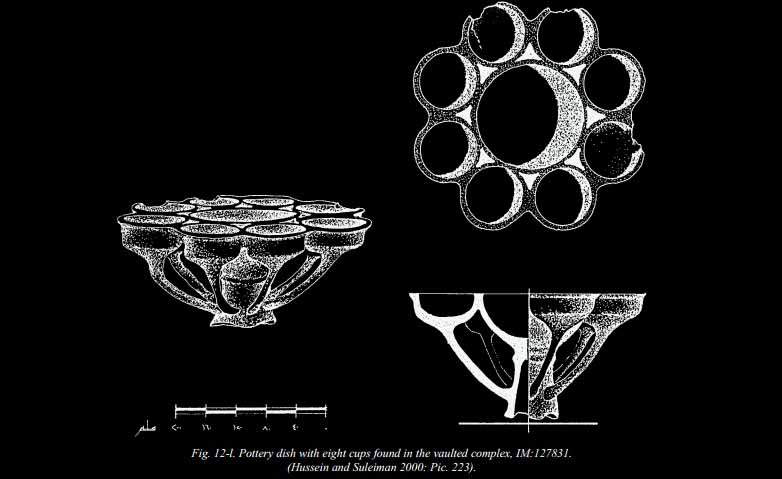
Not exactly Giselian but they interest me in relating to a Covenant vessel of the Gods, but anyway in general i'm always happy to follow up on any suggested intrigue relating to ancient civilizations and extra-terrestrial visitation which is why i'm intrigued and somewhat frustrated i can't find anything on the specific sites involved here with Gisel.
This is also by the way that if it's the case they have examples of what they consider alien artifacts i'm the person they should be showing to, they should come along here and elaborate upon their article, they know they want to...
It does seem a bit odd to me that there doesn't appear to be much of any actual place that can be seen were Gisel is indicated though there are houses strung out along the road a little to the North so maybe it's there, anyway it has to exist it's got it's own pointless Facebook page...
Perhaps one way to look at this also is if what they suggest here is taken at face value does this help explain their strange behaviour and interests and obsession with Cassini Diskus...?
a reply to: Anaana
They're something of a bottomless pit of intrigue but it's quite unusual for them to link only to their own 'in-house' articles for a piece such as this, which are mainly involving their prior interest in Giselians.
The tomb 308 Kerma relates to a dig in the Sudan if i recall, i looked up a published paper on that one but didn't see anything remarkable in the findings, i think that article also relates to the artifacts recovered from the tombs of the Queens of Nimrod which i also looked into
to see if i could see anything unusual in the finds, interestingly one of the things i picked up on was an unusual compound vessel which is actually far more common to Kaluraz and Mirlik culture as i posted in OP, this one is from Nimrod.

Not exactly Giselian but they interest me in relating to a Covenant vessel of the Gods, but anyway in general i'm always happy to follow up on any suggested intrigue relating to ancient civilizations and extra-terrestrial visitation which is why i'm intrigued and somewhat frustrated i can't find anything on the specific sites involved here with Gisel.
This is also by the way that if it's the case they have examples of what they consider alien artifacts i'm the person they should be showing to, they should come along here and elaborate upon their article, they know they want to...
edit on Kam22851vAmerica/ChicagoSaturday2128 by Kantzveldt
because: (no reason given)
Always good to hear from FL.
Is this where the Tehran UFO in 1979 supposedly landed?
Is this where the Tehran UFO in 1979 supposedly landed?
Well i did actually manage to locate Gisel on this map version here just slightly to the North West of Any
Sheikh, an unremarkable small village, and Korram Rud is somewhat to the North of it which is one of the cluster of five given archaeological
sites.
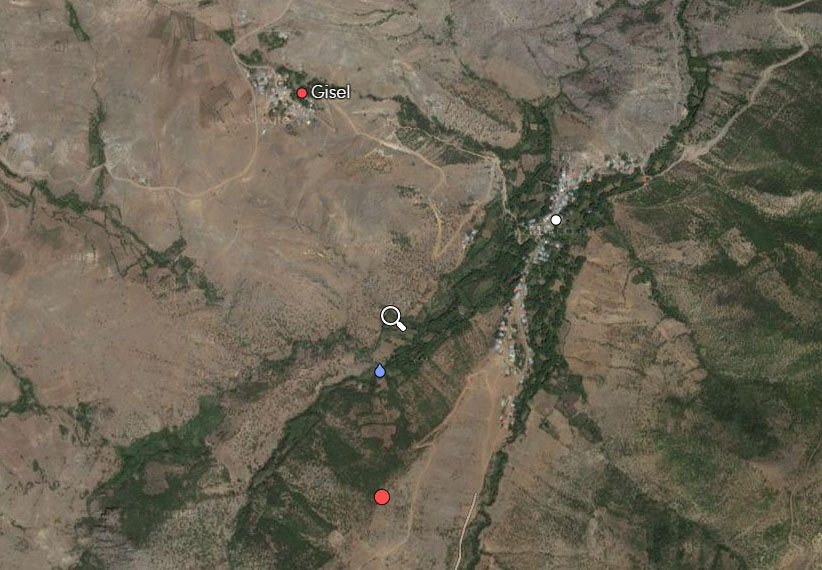
What is given as the main site and location of HLE would i take it be the mountain ridge to the West of the village known as Kuh-e Kapol Qaleh, so probably not a listed archaeological site as it falls to the South and West of listed and studied sites, so all i can learn online is nothing, but there is the possibility of a burial mound in the area they indicate off the mountain ridge.
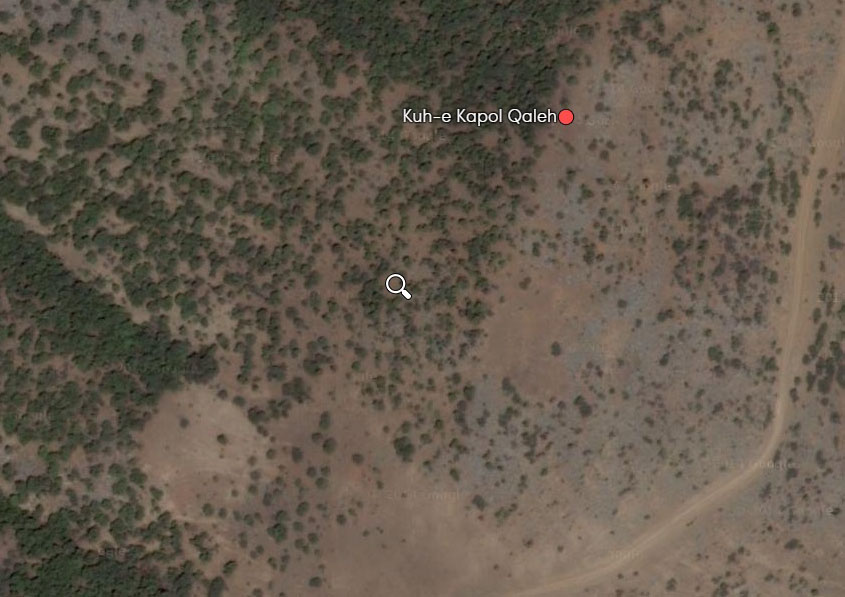

What is given as the main site and location of HLE would i take it be the mountain ridge to the West of the village known as Kuh-e Kapol Qaleh, so probably not a listed archaeological site as it falls to the South and West of listed and studied sites, so all i can learn online is nothing, but there is the possibility of a burial mound in the area they indicate off the mountain ridge.

edit on Kam22853vAmerica/ChicagoMonday2328 by Kantzveldt because: (no reason given)
Because this region might seem so obscure and difficult to relate to other traditions a little more, as i mentioned the Alborz mountain range is
considered the Airyanəm Vaēǰah or heartland and that is were the cult of the watchers originates as well as the rainbow bridge to the Heavens it
being a given centre of the world, there is also the tradition of Yazad Borz as son of
the waters emerging from Lake Arang and ascending the sacred mount.
Alborz Iranica
The name of the range probably means “high watch/guard,” Av. harā- (fem. “watch, guard, defence,” not attested as an appellative) is from the OIr. har- “to pay attention to, watch over, protect”
The name of the Hamadān massif Alvand (Elvend, etc.) may well contain the same element harā/ă-, i.e., *haravant-, “furnished with watchers” in the sense of “protecting.
Zoroastrian scholastics continued to suppose that the Peak of Harā intercepted the light of the heavenly bodies, which they thought had their orbits in planes parallel to the earth. The ancient Iranians used a 360-day calendar, and in Pahlavi texts (Bd. 56.3; Pahl. Rivāyat 65) it is said that there were 180 windows on the eastern side of the Peak, and 180 on the western side. Each morning the sun passed through one on the eastern side, and each evening it departed through one on the western side. There were likewise 135 windows on either side for the moon, and 90 for the stars; and Vanant, the “Conquering One,” chief star of the southern quarter, is said to be entrusted with guarding these apertures against demons, so that they may not block the passage of sun, moon, and stars (Mēnōg ī xrad 48.12-13). The addition of five extra days—the so-called “Gāthā” days—to the 360-day calendar at the first Sasanian calendar reform threatened the symmetry of this scheme, and the problem thus created could be regarded only as a mystery, as in the following gloss: “And on those five Gāthā days it [the sun] enters and leaves by the same window—a window which is not spoken of, for if it had been spoken of the demons would have known the secret, and harm would have been done”
There was evidently a tendency from ancient times to attach legends to the great world mountain, which in one Pahlavi text is said to rise up from Ērānvēǰ (Av. Airyanəm Vaēǰah), the region which had come to be regarded as the mythical homeland of the Iranians (Dādestān ī dēnīg, pursišn 20.2). The following strange legend is preserved in Bundahišn 24.24: “Every third year many from non-Iranian lands gather together upon the summit of Mount Harborz, in order to go into the Iranian lands to cause harm and bring destruction on the world. Then the yazad Borz [i.e., Ahura bərəzant; see under Apam Napāt] comes up from the depths of the water Arang and arouses, upon the highest point of all that high mountain, the bird
The Sīmorḡ swoops down and carries the child up to her nest on Alborz, “whose top was midst the Pleiades. Thou wouldst have said "It will obstruct the stars."
Alborz Iranica
a reply to: lostgirl
I've spent a few days going over the site and the links you provided. I was wrong about the meteorites, that is part of what the article is about, and what they are discussing but by no means the only topic. The title article doesn't really bear any relation to the articles in general, I think it is a chain yank. I was also wrong in assuming that there was anything nefarious in their activities but it took me a while to realise my own error, that title is total misdirection, but also an example of just how powerful language can be in shaping perception and all you need is a thesaurus to see into that. How can I not admire such intelligent simplicity?
I don’t know if anyone here is familiar with David Schon’s writing and practice regarding the bringing forth of ideas into good currency, but the more I looked at the forgotten languages website the more I was reminded of Schon’s ‘vanguards’, and particularly, the role of the ‘artist’ in providing us with new ways of seeing. I actually see a number of vanguard roles represented on forgotten languages. That is very exciting. I am deeply impressed with the directed and reflexive synergy that seems designed toward creating an ‘ecology of the mind’ that Gregory Bateson would marvel at and recognise as an endeavour towards understanding the ‘meta-patterning’ of our shared reality.
On first impression we see what we want or expect to see, our own preconceptions are reflected back upon us. It is only by looking deeper, and by exploring critically and relationally to ourselves and others, through a cycle of iteration and reflection that the picture becomes more inclusively visible, if that is not done, all you ever see is what you want to see, or yourself reflected back, and we never learn.
It’s a true labyrinth, a puzzle of your own making. The same goes for Google and the such-like, and those quotes you provide from that article demonstrate that point perfectly. It reflects back at you your preferences. Every time you search, all that you do on line, your profile is built. You have to learn to work around that or you will become trapped in a box of your own searching.
These guys seems to have found a way to mutually replenish both their collective and individual creativity. I love that and I am over the moon that I was able to look beyond my original preconceptions, 'cos the view is lovely.
I've spent a few days going over the site and the links you provided. I was wrong about the meteorites, that is part of what the article is about, and what they are discussing but by no means the only topic. The title article doesn't really bear any relation to the articles in general, I think it is a chain yank. I was also wrong in assuming that there was anything nefarious in their activities but it took me a while to realise my own error, that title is total misdirection, but also an example of just how powerful language can be in shaping perception and all you need is a thesaurus to see into that. How can I not admire such intelligent simplicity?
I don’t know if anyone here is familiar with David Schon’s writing and practice regarding the bringing forth of ideas into good currency, but the more I looked at the forgotten languages website the more I was reminded of Schon’s ‘vanguards’, and particularly, the role of the ‘artist’ in providing us with new ways of seeing. I actually see a number of vanguard roles represented on forgotten languages. That is very exciting. I am deeply impressed with the directed and reflexive synergy that seems designed toward creating an ‘ecology of the mind’ that Gregory Bateson would marvel at and recognise as an endeavour towards understanding the ‘meta-patterning’ of our shared reality.
On first impression we see what we want or expect to see, our own preconceptions are reflected back upon us. It is only by looking deeper, and by exploring critically and relationally to ourselves and others, through a cycle of iteration and reflection that the picture becomes more inclusively visible, if that is not done, all you ever see is what you want to see, or yourself reflected back, and we never learn.
It’s a true labyrinth, a puzzle of your own making. The same goes for Google and the such-like, and those quotes you provide from that article demonstrate that point perfectly. It reflects back at you your preferences. Every time you search, all that you do on line, your profile is built. You have to learn to work around that or you will become trapped in a box of your own searching.
These guys seems to have found a way to mutually replenish both their collective and individual creativity. I love that and I am over the moon that I was able to look beyond my original preconceptions, 'cos the view is lovely.
edit on 24-2-2015 by Anaana because: (no reason given)
edit on 24-2-2015 by Anaana because: articles - multiple not
singular
A follow up piece from FL here Beautiful skies over Gilan mainly concerning itself
with memo's regarding the 1976 incident over Gilan, but also a good deal of supposed information with regards to the greater context.
What is interesting in the memo information provided is that they begin to suggest that a ground based monitoring system was installed in former times which they refer to as beacons capable of emitting signals.
a strong radar return of an object hovering over a spot some 2 miles north-west of the marked position near Gisel.
Early in the morning of the 19th, Tacksman 2 reported civilian comms UHF activity at the Mehrabad airport DENIED and the scramble of a Phantom jet by IIAF towards the last position known of the main unidentified object. Object showed inordinate maneuverability and the pattern of pulses suddenly changed to DENIED at 47 nm North of Tehran at 0105 hrs DENIED a big object positioned over the marked position near Gisel.
a third and a fourth object were visible over the Gisel area showing DENIED strong bleeps centered around the DENIED GHz channel... ... remains unexplained how multiple 121.12 MHz signals were received... as if the ground were covered with hundreds of emergency beacons...
... further confusion about whether military activities carried out around Gisel in order to recover the beacon were justified within the framework of the current treaties signed with the Iranians or not...
What is interesting in the memo information provided is that they begin to suggest that a ground based monitoring system was installed in former times which they refer to as beacons capable of emitting signals.
- Draft on potential locations of Giselian beacons in Mauritania
- Draft on potential locations of Giselian beacons in Algeria
- Draft on confirmed locations of Giselian beacons in Iran
- Preliminary disinformation report:
We were having problems since early Sept. with the system as we were receiving strong pulses of unknown origin that we wanted to ascertain were not due to a system malfunction. The pulses behave erratically and did not conform to any of our signal profiles in the signals database. We held the view those pulses had to do with Soviet ICBM beacons, yet no activity was shown about any ICBM test being carried out. We required support from both Tacksman 1 and 2 and asked them whether they could come up with an approximate location of the origin of the pulses. At some time on the evening of the 18th, we identified the origin of the pulses near a location called Gisel, in Gilan. We were totally confused as we were expecting the source to be in Soviet territory and not on Iranian soil.
edit on Kam22858vAmerica/ChicagoSaturday2828 by Kantzveldt because: (no reason given)
new topics
-
UK and Europe Floods
Rant: 1 hours ago -
FEMA kicks hurricane survivors out of temporary housing into snowstorm and freezing temperatures
Disaster Conspiracies: 1 hours ago -
Failures of leadership on display
US Political Madness: 2 hours ago -
Power grid faults surged right before Los Angeles wildfires began
Mainstream News: 2 hours ago -
Tustin California Military equipment stolen BIG equipment .
Social Issues and Civil Unrest: 2 hours ago -
PALES-TINE, PALES-ADES and the Australian Aboriginal "Lightning Man"
Dreams & Predictions: 2 hours ago
top topics
-
Tustin California Military equipment stolen BIG equipment .
Social Issues and Civil Unrest: 2 hours ago, 12 flags -
FEMA kicks hurricane survivors out of temporary housing into snowstorm and freezing temperatures
Disaster Conspiracies: 1 hours ago, 12 flags -
Failures of leadership on display
US Political Madness: 2 hours ago, 10 flags -
How To Spot Fake U.F.O. Photos
Aliens and UFOs: 14 hours ago, 8 flags -
Scary video of face in an abandoned house
Paranormal Studies: 16 hours ago, 6 flags -
Power grid faults surged right before Los Angeles wildfires began
Mainstream News: 2 hours ago, 6 flags -
PALES-TINE, PALES-ADES and the Australian Aboriginal "Lightning Man"
Dreams & Predictions: 2 hours ago, 5 flags -
UK and Europe Floods
Rant: 1 hours ago, 5 flags
active topics
-
Failures of leadership on display
US Political Madness • 7 • : Boomer1947 -
FEMA kicks hurricane survivors out of temporary housing into snowstorm and freezing temperatures
Disaster Conspiracies • 8 • : network dude -
LA Mayor Bass Demanded $49M in Additional LAFD Cuts One Week Before Wildfires
Mainstream News • 28 • : marg6043 -
Power grid faults surged right before Los Angeles wildfires began
Mainstream News • 4 • : Mantiss2021 -
Los Angeles brush fires latest: 2 blazes threaten structures, prompt evacuations
Mainstream News • 410 • : marg6043 -
Tustin California Military equipment stolen BIG equipment .
Social Issues and Civil Unrest • 5 • : angelchemuel -
To become president, Zelensky had to learn Ukrainian
Political Conspiracies • 47 • : Oldcarpy2 -
Post A Funny (T&C Friendly) Pic Part IV: The LOL awakens!
General Chit Chat • 8017 • : angelchemuel -
This should be plastered all over the airwaves
Mainstream News • 58 • : fringeofthefringe -
Fire insurance in LA withdrawn months ago
General Conspiracies • 40 • : xuenchen

